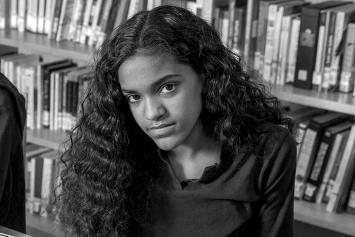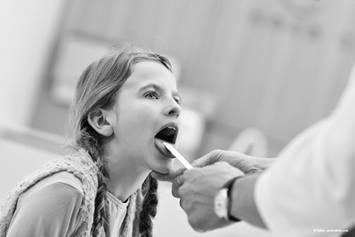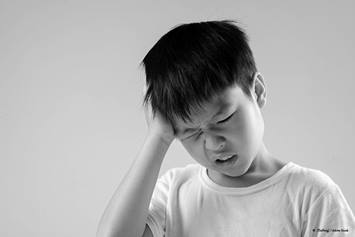Headaches
Most headaches in children are benign. Children’s headaches are very rarely from serious diseases or physical problems.
What Is a Headache?
Migraines and tension-type headaches are very common among children and teens. About 1 in every 10 adolescents (ages 12 to 17 years old) has migraine.
Up to 1 in every 25 children starts to have significant headaches before reaching school age. Because of their young age, they may not know how to describe pain.
A child with sudden, severe and changing headaches should be seen in the emergency room.
Examples of serious health problems whose symptoms include severe headaches are:
- Meningitis: Signs of severe infection would include high fever and headache. Other symptoms could include stiff neck, weakness, seizures, lethargy (very drowsy and sluggish), personality changes, nausea and vomiting.
- Severe Head Trauma: Call your child’s healthcare provider or go to the emergency room if the headache gets worse and the child also has other changes. These changes include responding differently, changes in level of consciousness, severe dizziness or nausea.
- Abnormal Brain Structure: Your child’s provider will ask questions about individual symptoms to decide if abnormal brain structure is possible. Examples of this could be a tumor, cyst (a fluid filled area), gliosis (scar tissue), vascular malformation (abnormal blood vessel) and Chiari malformation (a narrowing at the base of the skull).
All of these are rare.
List of Frequently Used Terms
- Provider: the Neurologist or Nurse Practitioner
- CDH: Chronic Daily Headache
- NDPH: New Daily Persistent Headache
- MOH: Medication Overuse Headache
- MRI: Magnetic Resonance Imaging Scan
- CT: Computed Tomography scan
- NSAID: Non-Steroidal Anti-Inflammatory
- OTC: Over-the-Counter Medication
What Are the Symptoms of a Headache?
Younger children often cannot describe their symptoms. Here are some signs that they are having headaches:
- They are quieter or moodier than usual.
- They are less active than usual.
- They do not want to watch TV or play with toys.
- They want to rest instead of play.
- They want to sleep more during the day.
- They complain of belly pain, vomit or have a loss of appetite.
- Light and noise bother them. They go to a dark and quiet place.
Children with other health concerns may be more likely to have headaches. These concerns may include:
- Depression
- Anxiety
- Irritable bowel syndrome (IBS)
- Epilepsy (seizures)
- High blood pressure
- Sleep disorders
- Sinus disease
- Jaw problems
- Eye disease
- Chronic medicine use
- Variety of other medical conditions
We take a complete medical history and examine all patients when we evaluate headaches. It is important to talk about all your child’s health concerns. Other health problems can cause headaches or make them worse. When your child’s practitioner knows all about his or her health, it will help with decisions on medical care. Having headaches does not mean your child has any other health problem. Your doctor or nurse practitioner will decide if other health conditions need attention or more testing.
What Causes a Headache?
Most headaches in children are benign. Children’s headaches are very rarely from serious diseases or physical problems. The most common physical causes for acute headaches include:
- Sinus infections
- TMJ (jaw dysfunction)
- Seasonal allergies
- Dental problems
- Teeth grinding
- Ear infections
- Viral infections (like the flu or common cold)
- Strep throat
- Mononucleosis (Mono)
How Are Headaches Diagnosed?
We use a set of guidelines that help us to diagnose each type of headache based on the symptoms. These guidelines were developed by a group of headache specialists from the International Headache Society. Clinicians around the world use these guidelines to diagnose headaches in children and adults.
Different types of headaches have different symptoms. Children and adults can have more than one type of headache.
Your child’s provider will ask some questions about symptoms to help decide what type(s) of headache he or she may have.



